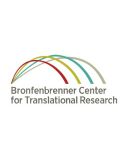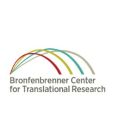Memory
The Evidence on How Kids Learn to Read
A recent review explains the complex methods of literacy instruction.
Posted August 14, 2019 Reviewed by Gary Drevitch

Reading is an essential life skill that predicts success on many levels later in life. There is clear evidence demonstrating that young people who do not learn to read proficiently are more likely to live in poverty, achieve a lower educational level, and become involved with the criminal justice system.
This means that the early years of elementary school – when kids learn to read Dr. Seuss and progress to Roald Dahl – are critical. Yet among educators, there has long been a debate about the best method for teaching reading. If you’ve got children getting ready to go back to school, it’s a great time to better understand how they will be learning so that you can engage with their educators.
The two main theories of reading instruction are phonics and whole language. Phonics instruction focuses on building reading skills from the ground up by teaching children the sounds letters make and then how to piece those letters together to make words. Whole language emphasizes the meaning of what children are reading instead of the sounds that make up individual words; it encourages them to combine speaking, listening, reading and writing to figure out the words on the page.
For decades, proponents of these two methods have argued over which is the best way to teach children to read. School districts choose one system or another depending on the preferences of the principal or individual teachers.
A recent systematic review published in the journal Psychological Science in the Public Interest explains why both methods are important: Phonics, for early readers and for learning to write, as well as whole language instruction, to help children understand complex meanings.
First, the authors explain, beginning readers need to learn that letters represent sounds. Research demonstrates that virtually all children need help to figure this out, which is where phonics comes in. The most comprehensive analysis of phonics research was conducted by the National Reading Panel convened by the U.S. Congress in the 1990s. The panel conducted a systematic review of 38 studies comparing the success of systematic phonics instruction versus non-systematic phonics instruction or no phonics instruction. They found that children who were taught phonics systematically in kindergarten or first grade were significantly better at decoding, spelling, and comprehending text.
There is also evidence that readers at all levels – even adults – use the decoding processes learned through phonics to read words that are new to them throughout their lives. Just think of the wildly popular Harry Potter books, which introduced an entire set of invented wizarding words, such as “muggle” and “squib,” which readers had never encountered before. People of all ages read those words for the first time by sounding them out.
And yet, the review finds, learning phonics is only a first step in mastering reading. In order to fully understand texts, children can’t sound out every word. They must learn to recognize words automatically so that they can understand their meanings quickly and move onto the next word. The evidence shows that this is a gradual transition: Children start by sounding out most words and then slowly move towards recognizing and understanding more words automatically.
But how do educators teach this larger skill of word recognition? First, research shows it helps if children have a broad vocabulary so that they have heard and know the meaning of many words from an early age. This learning occurs through parents talking to kids on a daily basis, describing and explaining the world around them. And it occurs when adults read aloud to children, which exposes them to even more words and helps them to understand more complex meanings than they can read on their own.
Next, teachers help children memorize “sight words” – common words that are difficult to sound out, such as “the” and “you.” This allows children to read independently, which builds their experience and exposure to printed words.
As readers become more advanced, their knowledge about the world in general is one factor that helps them understand what they are reading. Their brain’s ability to process language quickly and access memory also affects reading comprehension. At this stage, children improve their comprehension skills by summarizing, discussing with peers or adults and, on the whole, taking a deep dive into the meaning of what they are reading.
The take-home message: Learning to read is complicated. And no single method of teaching reading works best. Learning to read requires a broad range of skills including phonics, learning vocabulary, memory and knowledge, and more. Students are most successful when teachers combine different methods to help them read.
Visit Cornell University’s Bronfenbrenner Center for Translational Research’s website for more information on our work solving human problems.




